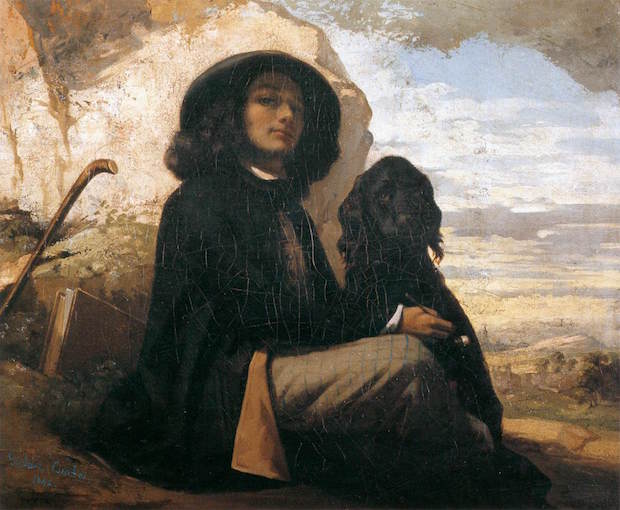Canine Companions: Famous Artists and Their Beloved Dogs
There’s nothing like the bond between a passionate creator and their loyal four-legged friend. Let’s explore the heartwarming...
Jimena Aullet 10 February 2025
Dogs are man’s best friends. And if that man happens to be a painter or a sitter for a painting, their four-legged friends must be included in them too. In the end, they are our most dedicated companions and that’s why we celebrate them with this article. Meet a few of the dogs immortalized by art history.

William Hogarth was truly attached to his pug. This iconic self-portrait definitely proves that. The dog is placed in the foreground in front of the image of the painter. We have to bear in mind that this was an unusual practice in the 18th century.

Dogs, in the symbolic language of the Netherlandish paintings, represented fidelity. We can find one in the Portrait of Giovanni Arnolfini and his Wife, one of the most mysterious paintings in art history by Jan van Eyck. The dog is one of the many symbols we can notice, there are also shoes, oranges, and a single burning candle. Furthermore, on the back wall, there is a mirror reflecting the scene with a probable self-portrait of the artist.

Édouard Manet is not particularly well-known for painting dogs, but this one is just so cute. It is painted in an Impressionistic style that perfectly depicts the texture of the soft and curly fur. We can almost feel how soft it is!

Hercules’ dog significantly contributed to art history because it discovered purple dye. According to the legend, while running on the beach the dog bit a sea snail and dyed his mouth purple. Clever boy.

Thomas Gainsborough, was a master of English landscape and portraiture, here he pictures a cottage girl with a dog in her arm. Her torn-up clothes, the broken pitcher, and her bare feet indicate that she was probably from a poor family. It may seem to us that the dog is her only companion.

It turns out that lap dogs are not a modern invention at all! Apparently, they were already popular in the times of Rembrandt. The portrayed woman is wearing a lot of jewelry and a fur stole, so we can imagine that the dog had a very luxurious life with her.

Royal families or not, they all love dogs. Even huge ones! Here the children of Charles I are portrayed with not one, but two dogs. It is a typical representation from the 17th century in which children are dressed and look as if they were adults.

Even the biggest hipster in art history, Gustave Courbet, loved dogs. In the end, who wouldn’t? He pictured his dog right next to him, and they even look like they are wearing matching outfits!
DailyArt Magazine needs your support. Every contribution, however big or small, is very valuable for our future. Thanks to it, we will be able to sustain and grow the Magazine. Thank you for your help!